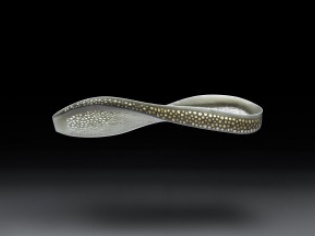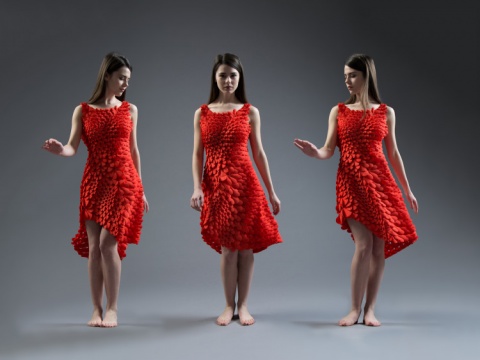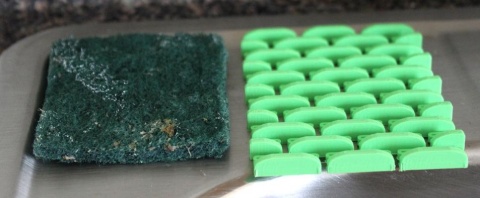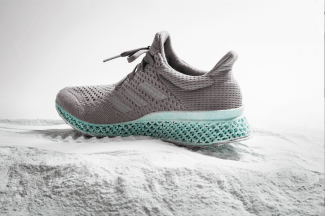-
Malavika Subramanyan
22nd Jun 2016
3D printing is real-life science fiction. Suddenly, there are no rules to the universe anymore, and one morning, I will wake up and read that the Prime Minister has returned from a week-long trip to Neptune in the 3D printed space shuttle gifted to India by Pakistan.
(That sounded funny in my head)
But anyway, let’s get back to the marvel that is 3D printing. It was invented in 1986 by Chuck Hull, who used a fabrication process called Stereolithography (SLA). Since then, new 3D printing technologies have been invented: Fused Deposition Modelling (FDM)/Fused Filament Fabrication (FFF), invented by S.Scott Crump, Selective Laser Sintering (SLS), Selective Laser Melting (SLM), Direct Metal Laser Sintering (DMLS), and Polyjetting are among the more popular ones.
Recently, Olli- a 3D printed self-driving bus created by Local Motors- hit the streets of Washington DC. In May, the world’s first fully operational 3D building was unveiled in Dubai. (Read the full story here) 3D printed houses and villas are a reality in the USA and China. But 3D printing’s uses extend far beyond the realms of architecture and transport. Let’s look at some of the other things that have popped out of 3D printers around the world.
1. Petal Kinematics dress designed by Nervous System

Image Credit: Nervous System Blog
Tech and fashion just had a rather gorgeous baby. This 3D printed dress from Nervous System is made using SLS technology, and is made of 1600 interlocked petals. Almost every element of its design can be customised for the wearer. These dresses cost about $3000 to print, but Nervous System is working on technology to bring the cost down, so as to produce regular clothing and not just high-end couture dresses. Well, that certainly is a relief, since $3000 for a single dress is a bit over my budget.
2. Antimicrobial 3D printed scrubber created by Jacob Stanton

Here’s some good news for everyone who’s ever done the dishes: Jacob Stanton created this antimicrobial 3D printed scrubber for a competition, and it’s waaaay better than that dirty sponge we all hate. “A quick study shows that kitchen sponges are one of the dirtiest things in a household,” says Stanton. “There are about 10 million bacteria per square inch in a kitchen sponge.” I wash my plate with that!
3D printed objects can be pretty filthy too; the layered constructions can be breeding grounds for bacteria. Stanton’s scrubber, however, is made of Purement, an antimicrobial filament produced by Korean firm BnK. The company says that with the use of Purement in 3D printing, “bacteria and germs find that the tiny nooks and crannies of 3D printed items aren’t so appealing, and thus the risk of spreading germs to your family is greatly reduced.”
Although the scrubber doesn’t hold soap very well, it works best to remove stuck-on particles from dishes.
3. 3D printed shoe made from ocean plastic waste by Adidas

This past December, Adidas introduced a shoe that combines ‘environment-friendly’ with ‘technology’- a 3D printed shoe made from ocean plastic waste. The upper part of the shoe is made from knitted “yarns and filaments reclaimed and recycled from ocean waste” (created in conjunction with Parley last June), while the 3D printed midsole is made of recycled polyester and gillnets.
At the Paris Climate Conference on Tuesday, Adidas’ Executive Board’s Eric Liedtke said, “The industry can’t afford to wait for directions any longer. Together with the network of Parley for the Oceans, we have started taking action and creating new sustainable materials and innovations for athletes.” The company has also taken steps to reduce and eventually phase out the use of plastic in its own products and activities. This shoe is certainly a step in the right direction.
4. BioPen

We human beings dream of playing god. Of course, it’s just a dream. God or the Big Bang, we can’t be either. But we can come pretty close, for a collaboration between researchers from the ARC Centre for Electromaterials Science (ACES) and orthopaedic surgeons at St Vincent’s Hospital, Melbourne, has resulted in the BioPen, a prototype 3D printing pen that allows users to draw human stem cells with “extremely high survival rates”- 97 percent. While bioprinters have previously been utilized to create everything from skin to parts of the eye, this may be the first time that a handheld pen gives rise to organic material capable of use in a surgical setting.
Although the pen is as yet a prototype and is currently undergoing testing for clinical trials, it’s not hard to see that the invention of the BioPen may well usher in a new age in the history of medicine, as well as 3D printing.
5. Repairing dead bodies

Yes, you read that right- 3D printing is indeed used, Longhua Funeral Parlor in China, to repair damaged corpses before the funeral. “They only ever found bits of him.” Said Mad-Eye Moody of Benjy Fenwick in Harry Potter and the Order of the Phoenix. With 3D printing, Fenwick’s family might have been able to bury him as they would have wanted.
Jokes aside, we all know that accidental deaths are common, and violent ones are sadly widespread. In China, which lacks basic infrastructure, accidents are frequent, which is why Longshua Funeral Parlor decided to use 3D printing technology to repair damaged bodies before funerals. That’s quite… grotesquely thoughtful, at least towards those who can afford it.
Five is way too small a number, but this list must end here. Anyone have any other uses for 3D printing… including wild and whacky rumours of future projects? Because that’s what 3D printing once was, after all; clearly no idea is too ‘out there’ to make reality!
Except time travel, that is.
Recommended:
3-D Printing Gets A New Face Through This Software
HP Launches World's First Production-Ready 3D Printing System
These 3D Printed Inventions Make You Go Gaga | TechTree.com
These 3D Printed Inventions Make You Go Gaga
From shoes to scrubbers, biopens to buildings - the future is here!
News Corner
- DRIFE Begins Operations in Namma Bengaluru
- Sevenaire launches ‘NEPTUNE’ – 24W Portable Speaker with RGB LED Lights
- Inbase launches ‘Urban Q1 Pro’ TWS Earbuds with Smart Touch control in India
- Airtel announces Rs 6000 cashback on purchase of smartphones from leading brands
- 78% of Indians are saving to spend during the festive season and 72% will splurge on gadgets & electronics
- 5 Tips For Buying A TV This Festive Season
- Facebook launches its largest creator education program in India
- 5 educational tech toys for young and aspiring engineers
- Mid-range smartphones emerge as customer favourites this festive season, reveals Amazon survey
- COLORFUL Launches Onebot M24A1 AIO PC for Professionals







TECHTREE